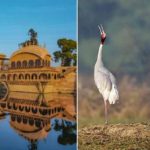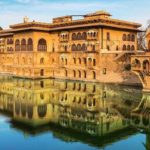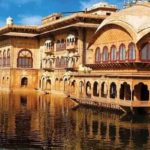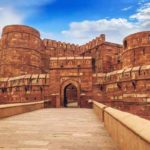Lohagarh Fort Bharatpur, the name literally translates to The Iron Fort and there are no prizes for guessing the obvious implications for choosing the particular nomenclature to designate this particular massive fortification. Situated in Bharatpur and amongst one of the many fortresses built by Maharaja Suraj Mal, this fortress proved to be a major thorn in the path of the invading British troops who could not break through despite using cannons and elephants to break the fortress gates.
Said to be one of the strongest fortresses in the history of India, the front gate of this fortress is Ashthadhatu, built from an alloy of 8 metals. The back gate is called Chowbhurj and is held by four pillars and hence its name which translates to four pillared gate. Although the Lohagarh fort may be lacking in extravagance and splendour of other forts in Rajasthan, however its impregnable fortress walls and rock solid gates not budging from position even after the impact of manifold force earned it the name of Lohagarh or the Iron fort.
The Lohagarh fort is a living testimony of the times that used to be, the chivalry and might and power of the Jat rulers of Lohagarh Fort Bharatpur. Apart from other fascinating monuments and memorials present inside the fortress premises, Lohagarh Fort also houses two monuments, namely Jawahar Burj and Fateh Burj, built by none other than Maharaja Suraj Mal to celebrate his victories over the invading Mughal and British forces. Both the British and Mughals used all their might to penetrate the fortress and bring down its walls.
However, they were thwarted in their efforts and forced to raise siege every time. Undeterred the British made repetitive attempts but every time victory was in favour of Raja Suraj Mal. Lohagarh Fort Bharatpur It was only the feuding Maratha forces who made a pact with Maharaja Suraj Mal after they were thwarted in their efforts and formed an alliance.
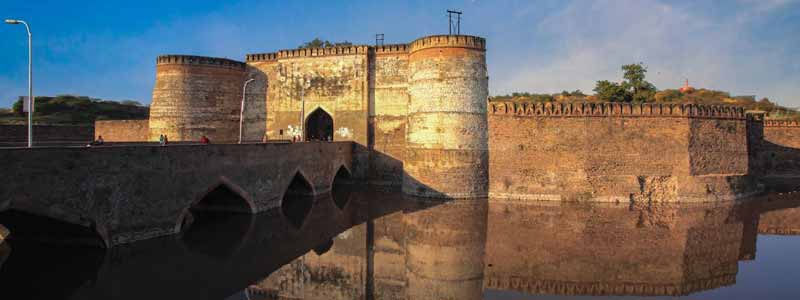
History
Situated at Bharatpur in Rajasthan, India – Lohagarh Fort Bharatpur was built in the early 18th century by Maharaja Suraj Mal – the founder of Bharatpur. History mentions that Suraj Mal used all his power and wealth to erect various forts and palaces across his kingdom, Lohagarh Fort Bharatpur in Rajasthan being one of them. One of the strongest forts ever built in India, Lohagarh withstood repeated attacks from the British forces led by Lord Lake in 1805, when they laid siege at Bharatpur for over six weeks.
Unlike the other forts in Rajasthan, Lohagarh Fort Bharatpur has almost no flamboyance associated with it; instead, the fort generates an aura of unassailable strength and magnificence. Maharaja Suraj Mal built two towers within the ramparts of the fort – the Jawahar Burj and Fateh Burj, to celebrate his victories over the Mughals and the British.
Lohagarh Fort in Rajasthan India was surrounded and protected by deep moats, and there is a legend associated with the moats, stating that the fort would fall only when a crocodile swallowed up all the water of the moats. It is believed that the gate of Lohagarh Fort Bharatpur originally belonged to the fort of Chittorgarh, but was carried away by Sultan Alauddin Khilji of Delhi. Towards the end of the 17th century, the gate was brought back by the victorious Jat armies from Delhi to Lohagarh Fort Bharatpur.
Of the two gates in the fort, one in the north is known as Ashtdhaatu (eight metalled) gate while the one facing the south is called Chowburja (four-pillared) gate.
It is very different from the other forts in Rajasthan Budget Tours, there is no flamboyance associated to fort but it generates an aura of strength and magnificence.
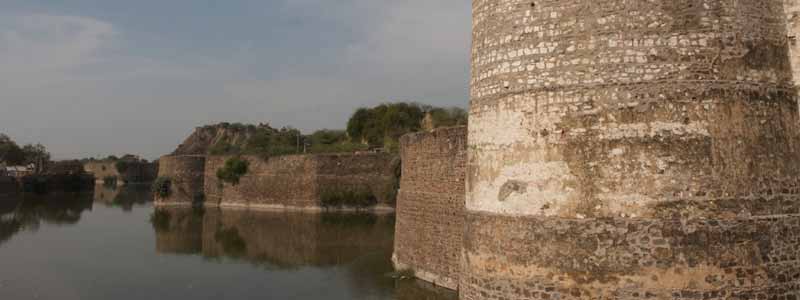
Lohagarh Fort Architecture
Of the two gates in the fort, one in the north is known as Ashtdhaatu (eight metalled) gate while the one facing the south is called Chowburja (four-pillared) gate.
Begun by Maharaja Suraj Mal in 1732, it was completed only 60 years later (see Maharaja Suraj Mal). The strong point of this once-formidable fort was its thick outer mud walls, which lovingly absorbed all the firing from the Mughal and British armies.
The cannonballs would sink into the mud, only to be collected later and fired back at the enemy! These terrific walls were about 7km in length and took as many as eight years to complete.
Ashtadhatu Gate : The main entrance to this grand fort is the Ashtadhatu Gate. Ashtadhatu means ‘eight metals’, for the spikes on this edifice are made of eight different metals.
This north-facing imposing gateway with huge rounded bastions and paintings of war elephants carries a unique history.
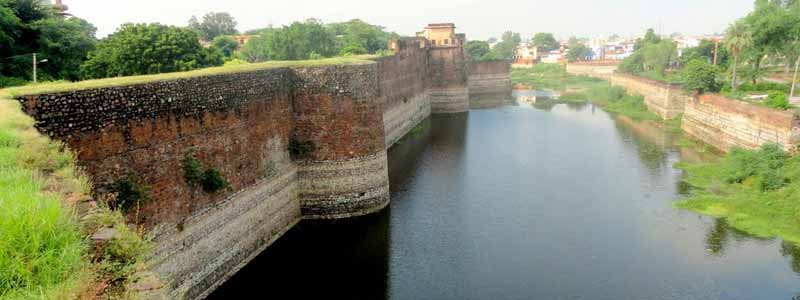
Best Time to Visit
The best time to visit the fort is during the period between October and February. You can visit the Lohagarh Fort Bharatpur on all days except Thursdays and Saturdays. It remains open from 10:00 a.m. to 4:30 p.m. The museum inside the fort is open on all days except for Mondays. A small amount of Rs. 5 is charged as entry fee.
How To Reach
By Road: Bharatpur is well-connected through national highways to some of the important cities in the region.
Nearest Railway Station: there is a railway station in Bharatpur from where you can board trains to cities in the region including Delhi.
Nearest Airport: The nearest airport is Delhi International Airport which is 154 km away.


